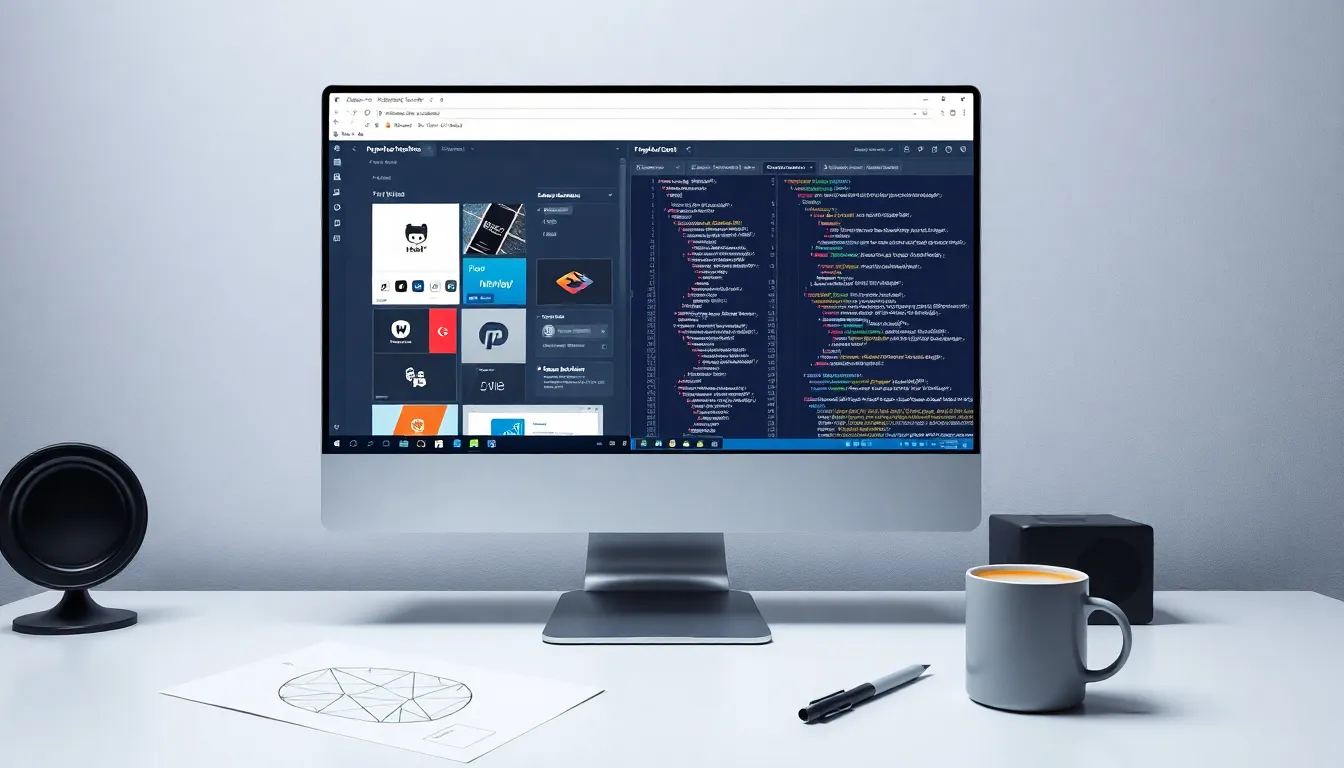Table of Contents
ToggleIn a world where design meets code, Figma to HTML is the magic carpet ride every developer dreams of. Imagine transforming stunning designs into functional websites faster than you can say “pixel-perfect.” It’s like having a superhero sidekick—only this one doesn’t wear spandex.
Overview of Figma to HTML
Figma to HTML simplifies the transition from design to functional code. This process enhances the efficiency of web development, allowing for quick and precise implementations of designs.
The Importance of Design-to-Code
Design-to-code bridges the gap between creative designs and technical execution. When developers understand the design intent, they create more accurate and responsive outputs. Effective collaboration between designers and developers improves project efficiency. A well-executed design-to-code process results in fewer revisions, reducing time spent on adjustments. High-quality code not only reflects the design but also contributes to better user experiences.
Key Benefits of Figma to HTML
Figma to HTML provides numerous advantages. Rapid development is one of the most significant benefits, as it enables teams to translate designs into working code quickly. Scalability arises from the structured approach of Figma’s design elements, making it easy to update components. Consistency is essential for maintaining visual integrity across platforms. The process reduces human error, creating cleaner and more maintainable code. Additionally, Figma’s integration with various development tools further streamlines workflows, increasing overall productivity.
Tools and Plugins for Figma to HTML
Numerous tools and plugins enhance the Figma to HTML process. They streamline the transition from design to development, ensuring efficiency throughout the workflow.
Popular Figma to HTML Plugins
Figma offers several plugins that facilitate conversions to HTML. Anima allows designers to create responsive websites directly from their designs. Html Generator automates the exportation of designs into clean HTML. Each tool reduces manual coding effort, accelerating the development timeline. Figma to HTML by Builder.io supports developers in visualizing and building user interfaces efficiently. These plugins integrate smoothly into Figma, ensuring quick access and ease of use.
Essential Tools for Developers
Developers benefit from various essential tools alongside Figma. Visual Studio Code provides a robust environment for HTML, CSS, and JavaScript coding. GitHub enables version control, fostering collaboration among team members. Browser DevTools assist in debugging and optimizing the user interface. Incorporating Webpack into the workflow supports module bundling, enhancing performance. Each tool plays a significant role in ensuring that the transition from design to HTML remains seamless and productive.
Step-by-Step Guide to Converting Figma to HTML
Converting Figma designs to HTML involves several crucial steps that ensure accuracy and functionality. Below are detailed procedures for each stage of the process.
Preparing Your Figma Design
Designers should start by organizing their Figma files. Utilize frames for responsive layouts and maintain consistent naming conventions for layers. Apply styles for colors, fonts, and effects, making these universal across components. Group related elements to simplify later steps. Ensure that all assets meet web standards, as this process eliminates potential issues during development.
Exporting Assets from Figma
Exporting assets requires attention to detail. Select the specific elements needed for the HTML project. Use the “Export” feature in Figma to save images, icons, and other graphical elements in appropriate formats such as PNG or SVG. Adjust export settings to optimize file size and quality. Designers can use multiple resolutions for responsive designs, facilitating a better user experience across devices.
Coding Best Practices for HTML Layouts
Applying coding best practices sets the stage for optimal results. Structure the HTML using semantic tags to enhance search engine optimization and accessibility. Keep the code clean and well-indented for readability. Use CSS for layout and styling, separating it from content to adhere to best practices. Incorporate responsive design principles to ensure compatibility across various devices. Regularly test the layout in different browsers to catch issues early in the development process.
Common Challenges in Figma to HTML Conversion
Figma to HTML conversion presents several challenges that developers must navigate for successful implementation.
Dealing with Responsive Design
Creating responsive designs from Figma requires careful planning. Developers should utilize flexible layout techniques, like CSS Grid and Flexbox, to accommodate various screen sizes. Identifying breakpoints based on designs ensures elements adjust correctly across devices. Testing layouts on different screen sizes prevents unexpected issues from arising post-deployment. Maintaining aspect ratios for images and other assets enhances visual consistency throughout the application. Leveraging media queries empowers developers to tailor styles for distinct devices, ensuring an optimal user experience.
Ensuring Cross-Browser Compatibility
Maintaining cross-browser compatibility is crucial in Figma to HTML projects. Developers often face discrepancies between browser behaviors, leading to unintended layout shifts. Utilizing tools like BrowserStack helps test designs on multiple browsers and versions efficiently. Implementing CSS resets minimizes differences across different environments, providing a uniform starting point. Tracking browser-specific quirks allows developers to address issues early in the process. Aligning with web standards, such as using valid HTML and CSS, further enhances compatibility, ensuring smooth functionality for all users.
Conclusion
Figma to HTML transforms the design process by bridging the gap between creativity and technical execution. This approach not only streamlines development but also enhances collaboration between designers and developers. With the right tools and practices in place, teams can achieve faster turnaround times and higher quality outputs.
Embracing this method allows for a more efficient workflow that minimizes errors and maximizes productivity. By focusing on responsive design and cross-browser compatibility, developers can ensure that their websites deliver exceptional user experiences. As the digital landscape continues to evolve, mastering the Figma to HTML process will be essential for staying competitive in web development.





